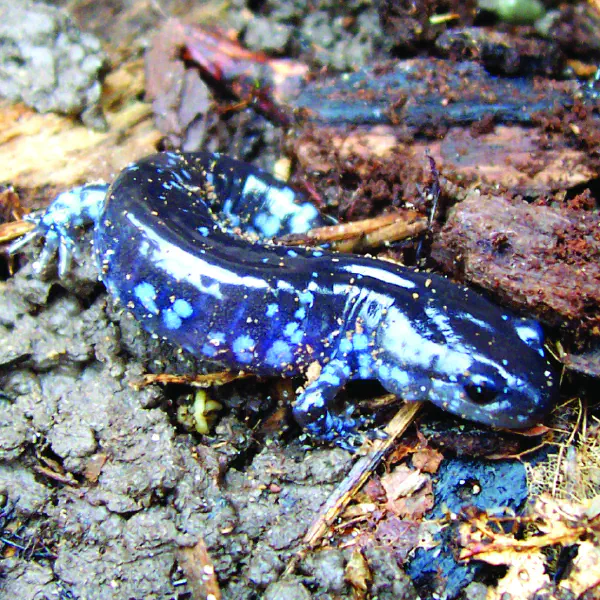Ambystoma laterale
Table of Contents

Scientific Classification
| Kingdom: Animalia |
| Phylum: Chordata |
| Class: Amphibia |
| Order: Urodela |
| Family: Ambystomatidae |
| Genus: Ambystoma |
| Species: Ambystoma laterale |
Conservation Status
Identifying Features
Blue-spotted salamanders are around 4-6 inches in length and are dark gray or black-colored with a paler belly. They have bright blue specks that cover their lower sides and limbs.
Habitat & Range
Blue-spotted salamanders can be found in moisty woodlands in parts of eastern central North America. As adults, they are terrestial and spend most of their time underground or in leaf litter. As larvae, they are aquatic and will remain in vernal pools until they are able to disperse into the surrounding wooodland.
Behavior
Blue-spotted salamander are nocturnal foragers. They will typically come out from their hiding location at night or during rainy weather to forage for food. During the day, they will remain underground to avoid drying out from the warm temperatures.
Life Cycle
In early spring, blue-spotted salamander migrate in large groups to temporary breeding pools. Females can lay hundreds of eggs yearly, and will deposit their eggs at the edges of the vernal pool.
Featured image by James Dake.

